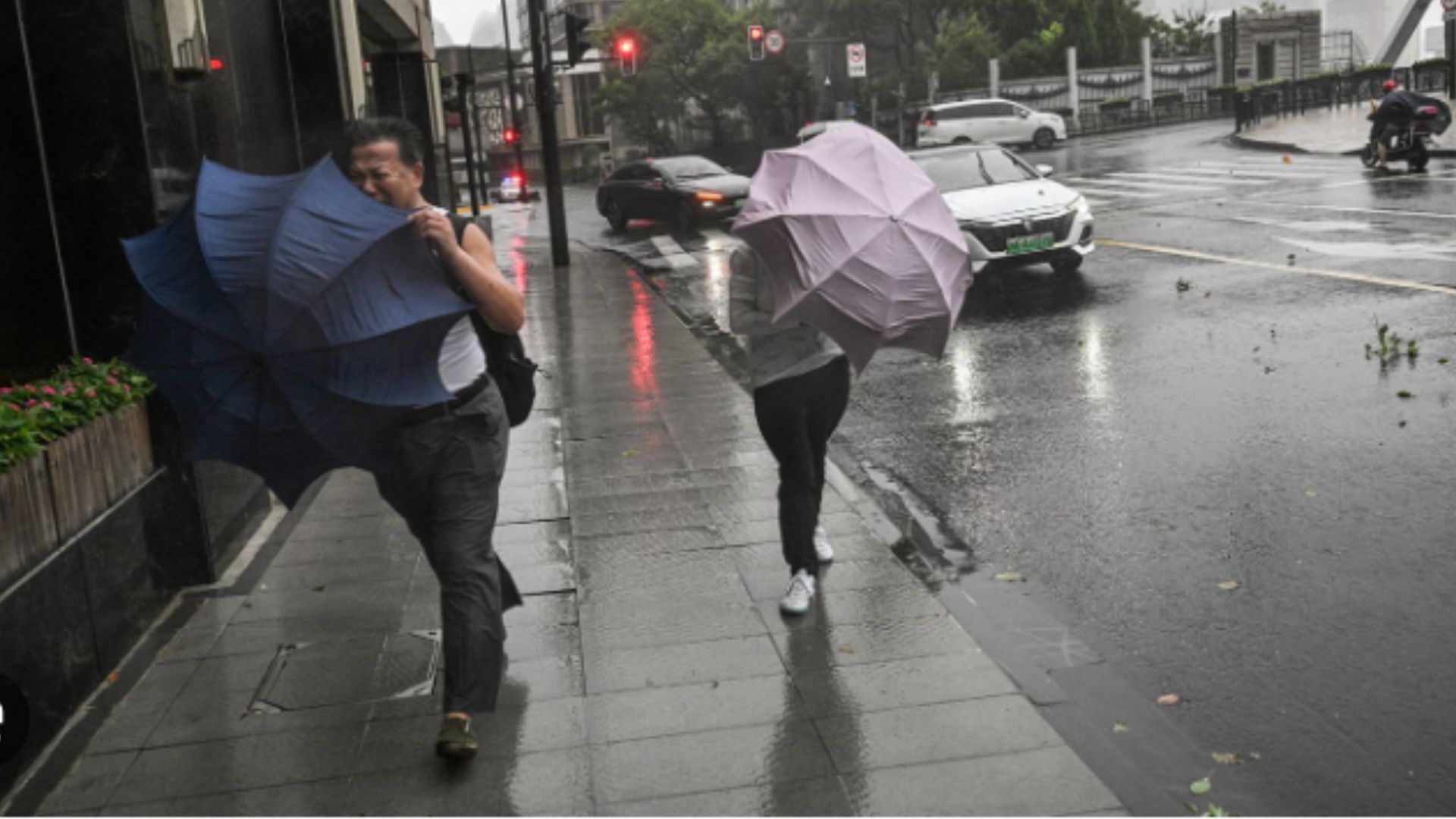The strongest typhoon to hit Shanghai since at least 1949 inundated roads with water and fallen tree branches, knocked out power to several residences and injured at least one person as it rushed through the financial metropolis on Monday. More than 414,000 people were evacuated before Typhoon Bebinca’s arrival, expected to bring high winds and severe rain. Schools were closed, and everyone was encouraged to stay indoors.

According to state media, an older man was injured by a fallen tree on Shanghai’s Chongming Island. He was transported to the hospital for treatment. Typhoon Bebinca made landfall around 7:30 a.m. in the huge Pudong business sector, with gusts gusting to 94 mph in the center.
According to footage broadcast by state television, torrential rains swamped the district’s highways. In other parts of Shanghai, uprooted trees and fallen branches covered several streets and sidewalks. As the typhoon subsided, rescuers cleaned branches and other debris blasted by the storm. Over 60,000 emergency responders and firefighters were on hand to assist in Shanghai.
According to authorities, winds uprooted or damaged over 10,000 trees and knocked out power to at least 380 households, causing four dwellings to be destroyed. Approximately 132 acres of agriculture were flooded. The typhoon weakened as it went inland, flooding portions of Jiangsu, Anhui, and Zhejiang provinces.
Flights, ferries, and train services were suspended in the megacity and nearby provinces, causing travel disruptions during China’s three-day Mid-Autumn Festival. Shanghai’s airports canceled hundreds of flights on Sunday and Monday, while authorities in Hangzhou, some 106 miles southwest of Shanghai, canceled almost 180 flights. Flights at Shanghai’s airports resumed Monday afternoon as the storm passed.
Weather forecasters predicted that Shanghai and parts of adjacent provinces would receive up to 12 inches of rain between Monday and Wednesday. Typhoons rarely hit Shanghai, which has a population of 25 million people. They usually make landfall further south in China.
Typhoon Yagi slammed China’s southern Hainan island earlier this month, wreaking havoc throughout Southeast Asia. In Myanmar, Yagi killed at least 74 people and left many missing. There were four deaths reported in Hainan, at least ten in Thailand, and twenty in the Philippines. Vietnam has claimed that the storm and ensuing flooding and landslides killed over 230 people, with dozens more still missing.
Before that, Typhoon Shanshan had weakened to a tropical storm before hitting Japan, but it still brought torrential rainfall that slowed transport and was blamed for at least a few deaths.
Storms such as Typhoon Bebinca are becoming more powerful and unpredictable due to climate change, partly because warmer oceans give more energy to feed severe weather, according to climatologists.


